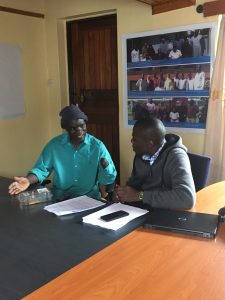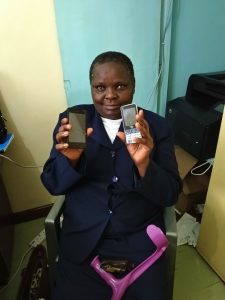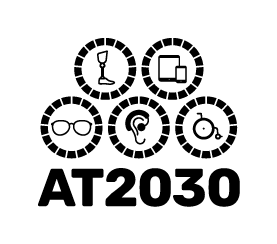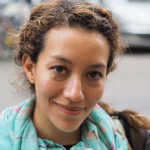This blog was co-written with Alizée Boutard, Senior Project Manager, and Diana-Paula Gherasim, Analyst, for Altai Consulting, who were commissioned for the data collection and analysis for this research piece.
With the support from the GDI Hub as part of its AT2030 initiative, in June and July, the GSMA Assistive Tech programme conducted deep-dives in Kenya and Bangladesh to explore ownership and access to mobile phones and services by persons with disabilities (PWD). We completed 1,000 surveys and 40 qualitative interviews with disabled persons in each country, broken down by type of disability from visual, hearing, mobility and others. Findings are complimented by key informant interviews from both markets. The research focused on the different stages in the use of mobile phones and services, including challenges around the usability of mobile phones and the user-journey of mobile money, mobile internet and access to public services.
Given that research in this field is very limited we wanted to share our primary research experience with others who may find it valuable when conducting research with PWD.
Lessons from conducting research with persons with disabilities
Getting a representative sample is challenging
One of the main challenges when conducting quantitative research on disability is to ensure the representability of the sample. It can be challenging to identify persons with certain types of disability, such as psycho-social disabilities, as these disabilities tend to be underreported by respondents. For logistical reasons, survey interviews were conducted in a central location, with the support of Disabled Persons Organisations (DPOs), rather than being conducted door-to-door. This however, makes it more difficult to capture certain segments of the population such as women or older respondents, who are not always permitted or might not feel comfortable travelling to participate in a survey.
Collaborating with DPOs is key
A total of 10 DPOs collaborated with us in Kenya, while in Bangladesh we worked with one umbrella organisation with links to over 350 DPOs. The latter approach of working with an umbrella organisation proved to be significantly more efficient.
On the whole, DPOs showed a great interest in this research as they have perceived the challenges faced by PWD when accessing and utilising mobile products and services. DPOs work within communities and they know the community members, their needs and realities as they work closely to provide them with support services. Working jointly with DPOs therefore provided us with the much needed contextual understanding of the lives of PWD. DPOs were able to identify the different profiles and backgrounds required for the target research quotas and mobilise participation within the community. They also advised on appropriate participation compensation for PWD, their guides (in the case of visually impaired participants) and in some cases their carers. This was well received by participants.
Finding participants can be challenging
We employed quota sampling to ensure that different population groups were included; hence, we set quotas by type of disability, age, gender and environment. Reaching some of these quotas proved to be quite challenging, specifically for the elderly and female quotas as well as for the “other” type of disability.
Identifying participants older than 45 years of age was a challenge as it is not uncommon that older people live in remote rural areas and are less connected than people in the younger age groups. Those working in this type of research should consider rural field trips to ensure discoverability and access to the elderly. Also, when interviewing elderly participants, low literacy levels made it challenging for them to comprehend and communicate certain concepts. For instance, elderly hearing impaired or deaf participants may not have been taught sign language which limits the possibility to communicate effectively with them.
Women with disabilities are a highly marginalised group and worse off than other disabled individuals. It was particularly challenging to identify female participants above 40 years of age. Insights from DPOs and experts suggest that the reasons for this are that their families tend to encourage them to stay at home and do domestic activities and small jobs (i.e. cleaning, cooking, sewing, taking care of children, etc.).
Finally, some disabilities are harder to identify than others. The stigma that surrounds psycho-social disabilities makes it difficult even for DPOs to reach out to individuals. Also, some individuals with these conditions may either not identify themselves as disabled or may not feel comfortable to publicly disclose their disability. In Bangladesh, finding participants that communicated using sign language was also challenging. The support and role of DPOs was key to communicate the research and find enough participants to be involved in the research.
Early insights from the research
Stigma and negative perceptions of disability still persist
In our report published last year, we reported that PWD suffer a high degree of isolation and are often stigmatised and discriminated by their communities. This was frequently mentioned during our interviews with PWD and key informants. For instance, it is not uncommon that PWD are segregated by their families and kept at home, without any access to support communities. This often limits their access to education or employment. Systemic barriers also exist as the majority of services have not been design with accessibility standards in mind.
Disability is largely underreported
In Kenya and Bangladesh the national statistics report a prevalence of disability of 3.5 per cent and 1.41 per cent [1] respectively, however the prevalence of disability is perceived as being heavily underreported. From expert interviews in both countries, DPOs and some government organisations estimate these numbers to be between 10-15 per cent. There are many reasons why disability prevalence may be underreported in statistical surveys. In Kenya, for instance, the 2009 census asked directly whether someone in the household had a disability—this is known to generate large underreporting. In Bangladesh, the use of the medical definition of disability captures only those who are considered as severely disabled.
Affordability and accessible design of handsets and mobile services is key
Many participants also reported having to pay “hidden costs” to access certain mobile services. For instance, in Kenya, visually impaired users rely on paying trusted individuals to do basic mobile money transactions, such as top-ups and cash outs, on their behalf. This is primarily because many have been the victims of fraudulent activities when topping up directly with mobile money agents as they have no means to confirm whether the agent has added the right balance or provided them with the right amount of cash.
Final thoughts
While the research team has encountered several challenges, the early insights that have been revealed have convinced us of the importance of conducting this type of research among PWD and key ecosystem stakeholders. Overall, we have found that mobile phones have a large potential to drive socio and economic inclusion of PWD in Kenya and Bangladesh. There is certainly more work to be done to ensure that mobile operators increase their awareness of the value and needs of their disabled customers (i.e. products and service provision). Digital technologies will also play a key role in driving greater awareness of disabilities, helping to overcome stigmas associated with PWD and make societies more inclusive of these individuals.
[1] Disability in Bangladesh: Prevalence and Pattern, Population Monograph: Volume-5, Bangladesh Bureau of Statistics, November 2015



